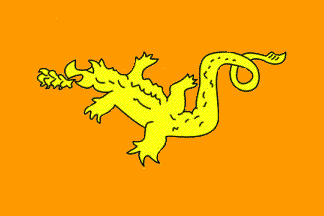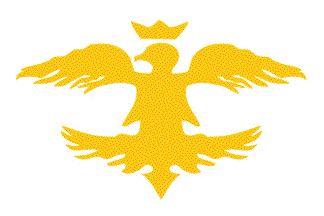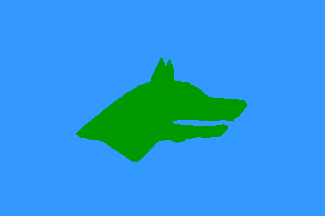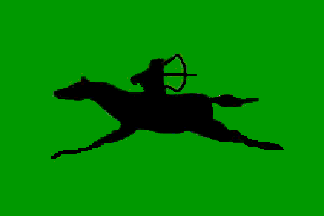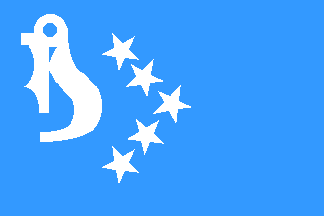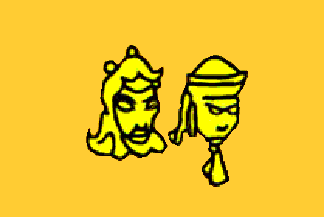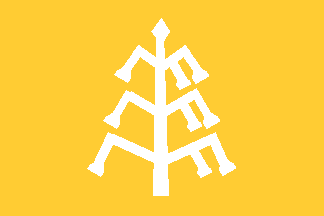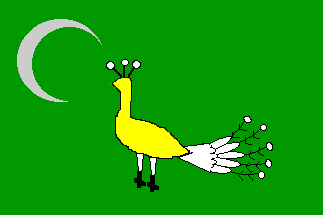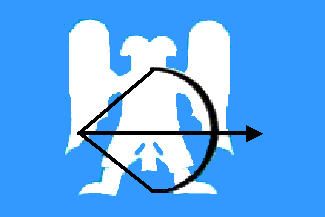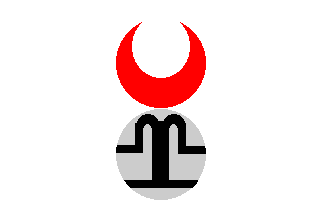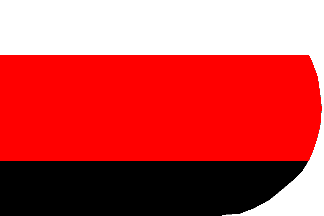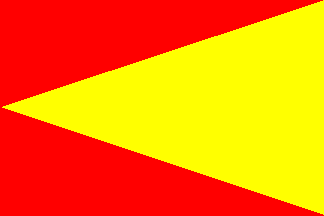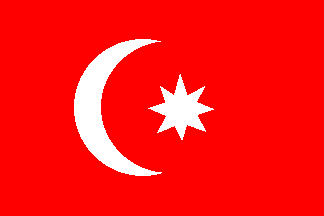


Notice: This is the official website of the All Empires History Community (Reg. 10 Feb 2002)
16 Turk Empires |
Post Reply 
|
Page <1 567 |
| Author | |
Ikki 
Chieftain 

Guanarteme Joined: 31-Dec-2004 Location: Spain Online Status: Offline Posts: 1378 |
 Quote Quote  Reply Reply
 Topic: 16 Turk Empires Topic: 16 Turk EmpiresPosted: 06-Jun-2006 at 03:45 |
|
According with the article of our own page, AE:
http://www.allempires.com/article/index.php?q=The_Xiong_Nu_Empire Probably in their migration they controled the Caspian sea, right, but that was after the expel from the actual Mongolia.The xioungnu empire didn't control the lands to the west of Tarim, i don't find anything about the vassalization of western nomads like the sarmats; so i can't agree with the arguments about the the "Great Hun Empire". bye Edited by Ikki - 06-Jun-2006 at 03:54 |
|
 |
|
BigL 
General 
Joined: 30-May-2005 Online Status: Offline Posts: 817 |
 Quote Quote  Reply Reply
 Posted: 06-Jun-2006 at 03:12 Posted: 06-Jun-2006 at 03:12 |
|
And the huns numbered 20,000 when entering Europe
|
|
 |
|
Suevari 
Knight 
Spammer Joined: 04-Mar-2006 Online Status: Offline Posts: 84 |
 Quote Quote  Reply Reply
 Posted: 06-Jun-2006 at 03:03 Posted: 06-Jun-2006 at 03:03 |
Yeah that is probably all the lands Hun horsemen travelled over, possibly vassal tribes rather than solid Hun territory. |
|
 |
|
Ikki 
Chieftain 

Guanarteme Joined: 31-Dec-2004 Location: Spain Online Status: Offline Posts: 1378 |
 Quote Quote  Reply Reply
 Posted: 05-Jun-2006 at 19:04 Posted: 05-Jun-2006 at 19:04 |
|
The great Hun Empire, 18 millions, includiying lands around Caspian Sea?? I doubt that comrade

|
|
 |
|
Guests 
Guest 
|
 Quote Quote  Reply Reply
 Posted: 05-Jun-2006 at 17:53 Posted: 05-Jun-2006 at 17:53 |
The Great Hun Empire (B�y�k H�n İmparatorluğu)"Official description": Founded by Mete (Bagatir), bordering Siberia in the North, Tibet-Kashmir in the South, the Pacific Ocean in the East and the Caspian Sea in the West (total area 18,000,000 sq. km). The Chinese called them the Hsiung-Nu. The flag attributed to the Great Hun Empire is an orange-yellow flag with a yellow dragon. Ivan Sache & Jarig Bakker, 4 July 2004 The Western Hun Empire (Batı H�n İmparatorluğu)"Official description": Founded by Panu, covering the area over present day Central Asia. The Empire of Western (Hiung-Nu) Huns lasted from 48 to 304 AD. The ruler had the title of Shan-Yu. This state was under Chinese overlordship. One of the leaders founded the short-lived Earlier Chao state, one of the 16 kingdoms, in Shansi (304-329). The flag attributed to the Western Hun Empire is a plain yellow-orange flag. Ivan Sache & Jarig Bakker, 4 July 2004 The European Hun Empire (Avrupa H�n İmparatorluğu)"Official description": Founded by Muncuk, Oktar, Rua and Aybars (brothers) covering the area of present day Southern Russia, Romania, Northern Yugoslavia, Hungary, Austria, Czechoslovakia, Southern and Central Germany (total area 4,000,000 sq. km). Gradual decline after 454 AD. This is Attila the Hun's Empire, which caused the Great Migration in Europe and ended with Attila's death in 453 AD. The flag attributed to the European Hun Empire is white with a yellow crowned bird with spread wings. Ivan Sache & Jarig Bakker, 4 July 2004 The White Hun Empire (Ak H�n İmparatorluğu)"Official description": Founded by Aksuvar (Aksungur) covering half of Northern India, Afghanistan and part of Turkestan (total area 3,500,000 sq. km). The White Huns (a.k.a. Hephthalites, Ephthalites, Hayathelites, Ye-tai, Huna), originating from the Altai Mountains, occupied in the Vth century AD Western Turkestan and disappeared in the second half of the VIIth century. The flag attributed to the White Huns is white with three yellow stars placed vertically in upper hoist. The G�kt�rk Empire (G�kt�rk İmparatorluğu)"Official description": Founded by Bumin Khan (Tumen) in the inaccessible valleys of the Altai Mountains (Ergenekon)(total area 18,000,000 sq. km). The Blue Turks overthrew the Juan-Juan masters ofMongolia in the VIth century AD and established a vast Empire spreading across both eastern and western steppelands to the Volga and beyond. Almost immediately this state split into western and eastern Khanates. They were finally defeated by the Uighurs in 745. The flag attributed to the G�kt�rk Empire is blue with a green wolf's head. Ivan Sache & Jarig Bakker, 4 July 2004 The Avar Empire (Avar İmparatorluğu)"Official description": Founded by Bayar Khan, covering the area between the Volga River, Hungary and Bessarabiya. Avars were a Nomadic Turkish or Mongol people which, in the late VIth century AD invaded the plain of Hungary and set up a powerful kingdom, even besieging Constantinople. They declined in the VIIIth century, until defeated by Charlemagne at the end of the VIIIth century. The flag attributed to the Avar Empire is green with a black rider shooting backwards with a bow. Ivan Sache & Jarig Bakker, 4 July 2004 The Hazar Empire (Hazar İmparatorluğu)"Official description": Founded by the Hazar tribe of G�kt�rks who migrated to the West and settled in the area stretching from the Caucasian Mountains to the Danube River and to the middle of Russia. Its greatest ruler was Hakan Yusuf. The Khazars were a nomadic people who set up an extensive state in the steppelands east and west of the lower Volga in the VIth century AD. They were converted to Judaism around 800 (i.e., they chose this religion in preference to Islam and Christianity). In the later Xth century the rulers of Kiev broke their power. The flag attributed to the Hazar Empire is blue with an unidentified white device in canton and five white stars arranged in a > pattern. Ivan Sache & Jarig Bakker, 4 July 2004 The Uygur State (Uygur Devleti)"Official description": Founded by Kutlug Bilgekul Khan, covering Central Asia and northern Mongolia. This state was related to the Uyghurs/Uighurs, the Turkic people over near where the Turks originated, in the VIIIth-IXth century in Sinkiang, Western China. The flag attributed to the Uygur state is yellow-orange with two yellow masks (?). The Karahan (Karahanlılar)"Official description": Founded by Saltuk Bugra Khan, covering the Trans-Oxus area including Issyk and Balkash lakes. This was an Empire north of the Ghaznevid Empire, founded by a family of Karluk Turkish descent, which ruled in the X-XIIth centuries, with capitals in Bukhara and Kashgar (Balasaghun). The flag attributed to the Karahan is yellow-orange with an unindentified white device. Ivan Sache & Jarig Bakker, 4 July 2004 The Gazneli (Gazneliler)"Official description": Founded by Alptekin, covering the area from the Trans-Oxus to the Ganges River, from the shores of the Caspian Sea to the steppes of the Pamir (total area 4,700,000 sq. km). The Empire of the Ghaznavids, founded by Mahmud of Ghazni (ruled 998-1030), had its center in Ghazni, Afghanistan. The flag attributed to the Gazneli is green with a grey crescent in canton and a peacock. Ivan Sache & Jarig Bakker, 4 July 2004 The Great Seljuk Empire (B�y�k Sel�uk İmparatorluğu)"Official description": Founded by Sel�uk Khan, bordering Balkash and Issyk lakes and Tarim Derya in the East, Aegean and the Mediterrenean shores in the West, Aral Lake, Caspian Sea, Caucasian and the Black Sea in the North and Arabia and Gulf of Oman in the South (total area 10,000,000 sq. km) This refers to the Seljuk Turks, a Muslim dynasty established in what is now eastern Turkey after about 1065 AD. The flag attributed to the Great Seljuk Empire is blue with a white winged and double-headed silhouette and a black bow and arrow. Ivan Sache & Thomas Robinson, 4 July 2004 The Harzemshah (Harzemşahlar)"Official description": Founded by Kudrettin Mehmet (Harzemshah), covering Persia, Southern Caucasia, Dagestan, Afghanistan and most of Central Asia (total area 5,000,000 sq. km) Khwarizm Shah was the region around Khiva, near Lake Aral. This area is related to the Anushtiginid dynasty, which ruled nearly all of Central Asia till India from 1097-1231, when they were crushed by Dsjingis Khan. The flag attributed to the Harzemshah is a plain black flag. The Golden Horde (Altınordu Devleti)"Official description": Founded by Batur Khan, covering Eastern Europe, the Western Urals, Crimea and the area to the north of the Volga. The Golden Horde, the Mongol Khanate in Russia, was established in the mid-XIIIth century and lasted till the XVth century. The flag attributed to the Golden Horde is white with a red crescent pointing upwards, placed above a grey disk charged with a black symbol. Ivan Sache & Jarig Bakker, 4 July 2004 The Great Timur Empire (B�y�k Timur İmparatorluğu)"Official description": Founded by Timur Gurgani bordering the Balkans in the West, the Volga in the North, Indian Ocean in the South and Central Asia in the East
Source: R.F. Tapsell. 1983. Monarchs, Rulers, Dynasties and Kingdoms of the World. Recent studies have shown that this Empire was a Mongol state but official Turkish sources still consider it as Turk. The flag attributed to the Great Timur Empire is blue with three white disks placed 1 + 2 in the middle of the flag. Ivan Sache, Jarig Bakker & Onur �zg�n, 4 July 2004
In Flags of the World 1669-1670, edited by Kl. Sierksma, 1966 [sie66] is a flag on p. 271 with caption "TAMERLANE". This particular flag nowhere has its counterpart. It is not to be found in the Sketchbook, a Napolitan manuscript from c. 1666&. Tamerlan, le fl�au de l'Asie, souloit arborer ses pavillons de trois diverses couleurs, de blanc, de rouge & de noir, couleurs de paix, de sang, & de mort. which translates in English as: Tamerlan, the scourge of Asia, wanted (? provided souloit is indeed vouloit, the ancient form of voulait) to hoist his three-coloured ensigns, white, red and black, colours of peace, blood and death. The full source is: Cleirac, Estienne: Explication des termes de marine employ�s dans les dicts, ordonances et r�glemens de l'admirat ... Jacques Mongiron Millanges, Bordeaux, 1647. -4to, First edition 1636. I suppose that Cleirac based his remarks on the travel-book of Ruy Gonzalez de Clavijo, who travelled to the court of Timur 1403-1406, and wrote: the Historia del gran Tamurlan e itinerario, which appeared in the Hakluyt series in English translation in 1859 (1st series, no. 26). Jarig Bakker, 15 July 2003 The Bab�r Empire (Bab�r İmparatorluğu)"Official description": Founded by Babur Shah, covering Afghanistan and India (total area 2,700,000 sq. km) Babur descended from the Timurids in Fergana, was expelled from there by the Shaibanids and fled to India, which he conquered. He founded the Moghal (or Moghul) dynasty, which ruled from 1526 to 1857. The flag attributed to the Babur Empire is red with a yellow triangle placed all along the fly and pointing to the middle of the hoist. Ivan Sache & Jarig Bakker, 4 July 2004 The Ottoman Empire (Osmanlı İmparatorluğu)"Official description": Founded by Osman, covering Algeria, Tunisia, Libya, Egypt, Sudan, Arabia, Jordan, Israel, Syria, Iraq, Anatolia, Caucasia, Crimea, Hungary, Romania, Yugoslavia, Bulgaria, Greece, Cyprus (total area 20,000,000 sq. km) The Ottoman Empire preceded the modern Turkish Republic. The flag attributed to the Ottoman Empire is red with a white crescent and eight-pointed star. |
|
 |
|
Post Reply 
|
Page <1 567 |
| Forum Jump | Forum Permissions  You cannot post new topics in this forum You cannot reply to topics in this forum You cannot delete your posts in this forum You cannot edit your posts in this forum You cannot create polls in this forum You cannot vote in polls in this forum |
Copyright ©2001-2009 Web Wiz
This page was generated in 0.109 seconds.












 Printable Version
Printable Version Google
Google Delicious
Delicious Digg
Digg StumbleUpon
StumbleUpon Windows Live
Windows Live Yahoo Bookmarks
Yahoo Bookmarks reddit
reddit Facebook
Facebook MySpace
MySpace Newsvine
Newsvine Furl
Furl Topic Options
Topic Options